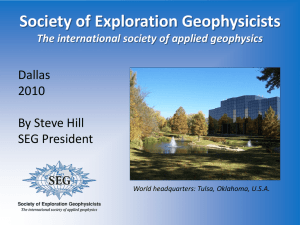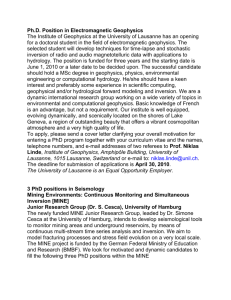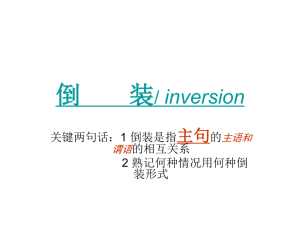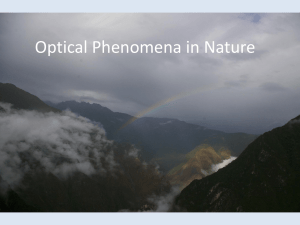vs and vp determination via joint inversion of ray
advertisement
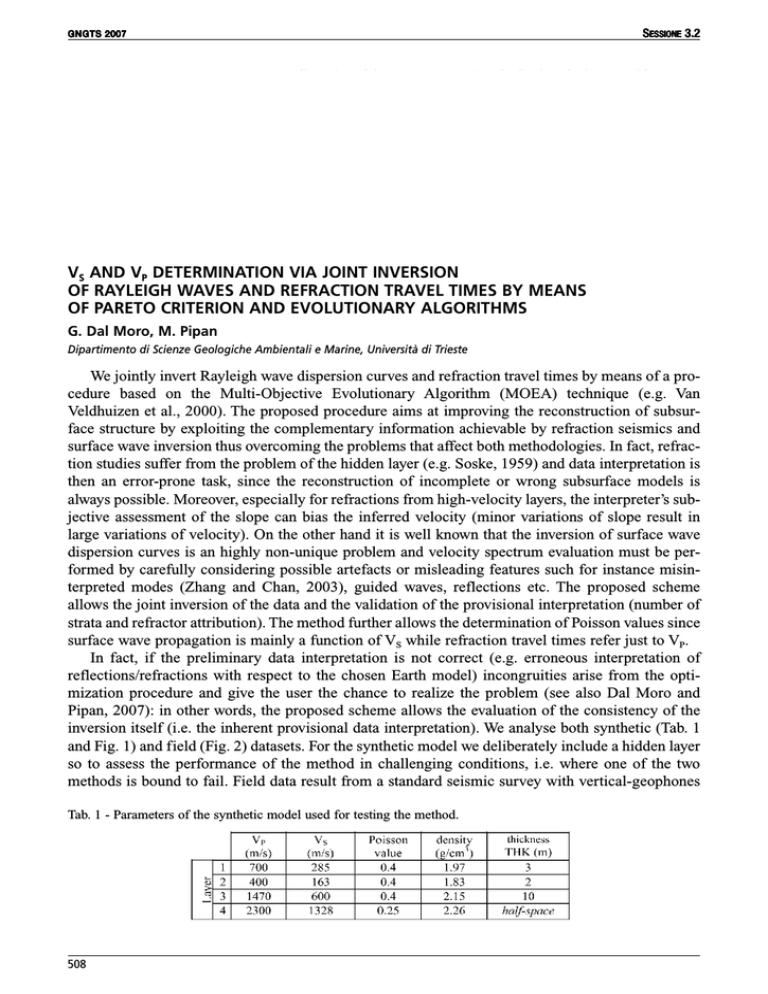
GNGTS 2007 SESSIONE 3.2 Ringraziamenti. Questo progetto è stato finanziato dal Programma Nazionale di Ricerche in Antartide (PNRA 2002-3.8). Si ringrazia Giuliano Brancolini, responsabile del settore Geofisica per il PNRA, Martina Busetti e Laura De Santis per i loro preziosi consigli e le loro utili discussioni. Bibliografia Böhm, G., Rossi G. e Vesnaver A.; 1999: Minimum time ray-tracing for 3-D irregular grids. J. of Seism. Expl., 8, 117-131. Böhm G., Neslihan O. ed il gruppo nave OGS-EXPLORA; 2006: Progetto WISE - Evoluzione della calotta occidentale nel mare di Ross (Antartide). Prima parte – L’acquisizione sismica e l’elaborazione in tempi. Atti 25° convegno GNGTS (CDROM). Stewart R.; 1993: Exploration Seismic Tomography: Fundamentals, Course note series, volume 3, S. N. Domenico, Editor. SEG Society of Exploration Geophysicists. Vesnaver A. e Böhm G.; 2000: Staggered or adapted grids for seismic tomography? The Leading Edge, 9, 944-950. VS AND VP DETERMINATION VIA JOINT INVERSION OF RAYLEIGH WAVES AND REFRACTION TRAVEL TIMES BY MEANS OF PARETO CRITERION AND EVOLUTIONARY ALGORITHMS G. Dal Moro, M. Pipan Dipartimento di Scienze Geologiche Ambientali e Marine, Università di Trieste We jointly invert Rayleigh wave dispersion curves and refraction travel times by means of a procedure based on the Multi-Objective Evolutionary Algorithm (MOEA) technique (e.g. Van Veldhuizen et al., 2000). The proposed procedure aims at improving the reconstruction of subsurface structure by exploiting the complementary information achievable by refraction seismics and surface wave inversion thus overcoming the problems that affect both methodologies. In fact, refraction studies suffer from the problem of the hidden layer (e.g. Soske, 1959) and data interpretation is then an error-prone task, since the reconstruction of incomplete or wrong subsurface models is always possible. Moreover, especially for refractions from high-velocity layers, the interpreter’s subjective assessment of the slope can bias the inferred velocity (minor variations of slope result in large variations of velocity). On the other hand it is well known that the inversion of surface wave dispersion curves is an highly non-unique problem and velocity spectrum evaluation must be performed by carefully considering possible artefacts or misleading features such for instance misinterpreted modes (Zhang and Chan, 2003), guided waves, reflections etc. The proposed scheme allows the joint inversion of the data and the validation of the provisional interpretation (number of strata and refractor attribution). The method further allows the determination of Poisson values since surface wave propagation is mainly a function of VS while refraction travel times refer just to VP. In fact, if the preliminary data interpretation is not correct (e.g. erroneous interpretation of reflections/refractions with respect to the chosen Earth model) incongruities arise from the optimization procedure and give the user the chance to realize the problem (see also Dal Moro and Pipan, 2007): in other words, the proposed scheme allows the evaluation of the consistency of the inversion itself (i.e. the inherent provisional data interpretation). We analyse both synthetic (Tab. 1 and Fig. 1) and field (Fig. 2) datasets. For the synthetic model we deliberately include a hidden layer so to assess the performance of the method in challenging conditions, i.e. where one of the two methods is bound to fail. Field data result from a standard seismic survey with vertical-geophones Tab. 1 - Parameters of the synthetic model used for testing the method. 508 GNGTS 2007 SESSIONE 3.2 Fig. 1 - Synthetic dataset (correct data interpretation): a) model distribution in the objective space; b) length of the Pareto front as the evolution proceeds; c) observed and calculated dispersion curves; d) observed and calculated refraction travel times. and vertically-incident seismic source (sledgehammer). Figs. 1a and 1b show that the symmetry of the Pareto models represents a robust parameter to assess the soundness of the solution (then of the adopted data interpretation) while the decrease of the Pareto front does not represent a valid parameter (compare with results presented by Dal Moro and Pipan (2007) about the joint inversion of surface wave dispersion and reflection travel times). Results for a field dataset acquired on a sandy beach in NE Italy are reported in Fig. 2. Adopted parameters and resulting model are summarized in Tab. 2. From the comparison of velocities and Poisson ratio values, we can infer that the shallow two layers are most probably sands, which differ in grain size, pressure and water content (see e.g. Tab. 2 - Mean model obtained for the field dataset (see Fig. 2). 509 GNGTS 2007 SESSIONE 3.2 Fig. 2 – Field dataset: a) model distribution in the objective space; b) observed and calculated dispersion curves; c) observed and calculated refraction travel times. Prasad, 2002; Zimmer et al., 2002). The parameters of the third one are compatible with water-saturated gravels while the underlying half-space exhibits clear characteristics of hard rock. Acknowledgements. This research was supported by research grants COFIN 2004/2006 and by a Halliburton Landmark Academic Grant. One of the authors (Giancarlo Dal Moro) was further awarded a fellowship by the Progetto D4 (European Social Fund, Italian Ministry of Welfare and Regione Friuli Venezia Giulia). References Dal Moro, G., Pipan, M., 2007, Joint Inversion of Surface Wave Dispersion Curves and Reflection Travel Times via Multi-Objective Evolutionary Algorithms, Journal of Applied Geophysics, 61, 56-81. Prasad M., 2002, Acoustic measurements in unconsolidated sands at low effective pressure and overpressure detection, Geophysics, 67, 405-412. Soske J. L., 1959, The blind zone problem in engineering geophysics, Geophysics, 24, 359-365 Van Veldhuizen, D. A., Lamont, G. B., 2000. Multiobjective Evolutionary Algorithms: Analyzing the State-of-the-Art. Evolutionary Computation 8, 125-147. Zhang S.X. and Chan L.S., 2003, Possibile Effects of Misidentified Mode Number on Rayleigh Wave Inversion, J. Appl. Geophysics, 53, 17-29 Zimmer M., Prasad M., and Mavko G., 2002, Pressure and porosity influences on VP-VS ratio in unconsolidated sands, The Leading Edge, 21, 178-183 510


